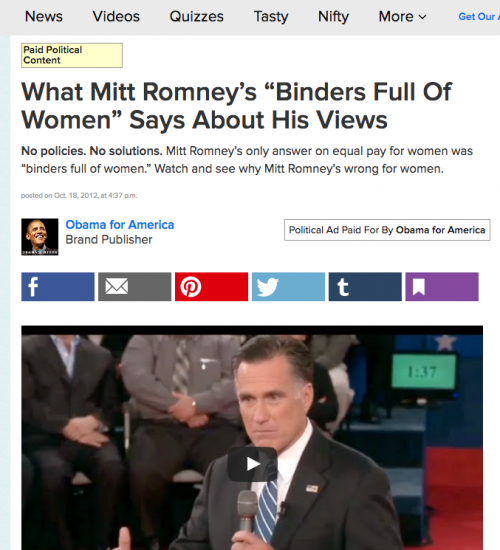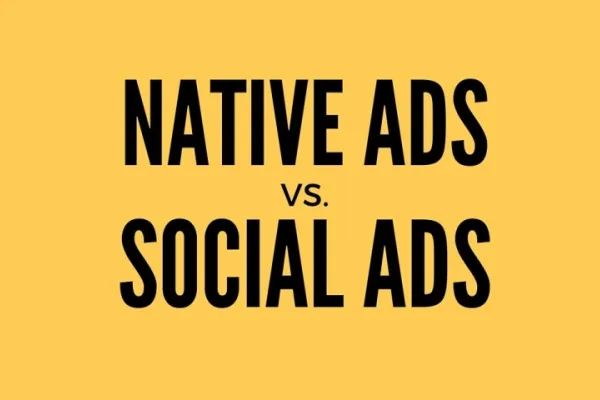 Details
Details
Rarely in recent years have elections held in both the US and in Europe been so exciting and surprising as in 2016 and 2017. Two researchers share their findings concerning how readers respond to political native advertising and what the implications might be for the trustworthiness of journalism.
By Erik Knudsen
Postdoc researcher at University of Bergen
Bergen, Norway
Twitter
By Magnus Hoem Iversen
PHD Scholar at University of Bergen
Bergen, Norway
Twitter
Journalism is in dire need of income these days. The crisis of the business model is caused by a fragmentation of both audience and content as well as competition from companies like Facebook and Google.
As native advertising is maturing and is increasing in popularity, newsrooms are finding new sources of revenue. This is a positive development. Journalism gets funding and audiences are being exposed to content that is relevant and valuable to them rather than advertising that is annoying or irrelevant.
However, the rise of native advertising has also been controversial. Worries have been voiced as to whether people are being tricked and that they don’t realise when they are being exposed to commercial or paid content rather than journalistic content.
It might be easy to shrug off this worry by saying “people are not stupid” or even “does it really matter?” Still, we believe the effects of political native advertising should be examined in a time where politicians as well as members of the public question the trustworthiness of journalism.
RELATED: What Readers Think About Native Advertising [Survey]
Since people generally place more trust in editorial than commercial content critics of native advertising claim that it can blur the boundaries between the two. Thereby reducing the public's trust in editorial content. If this holds true the use of native ads as a solution to revenue loss could undermine journalisms more fundamental business asset: credibility.
A further challenge to journalism is posed by political native advertising
A further challenge to journalism is posed by political native advertising. Although it is still not so common, there are several examples such as the branded campaign 'Obama for America' at BuzzFeed (click on the photo to see it).
A Norwegian case inspired us to study this phenomenon more thoroughly. A local branch of Norway's largest political party placed a very subtly labelled native ad in a regional newspaper.
The content featured a long interview with the local candidate for mayor, complete with a video feature and a narrative that put the candidate in a very positive light. There was no mentioning of the sponsor behind the ad. Only after after much criticism was a byline attributing the ad to the Labour Party added.
The problem with political native ads
Native advertising has several different definitions, however, we approach the phenomenon as social scientists. What is a key characteristic for us is that native advertising mimics editorial content in form because it looks like journalism and in positioning within the editorial space because you encounter it blended in with the regular journalism.
So what is the problem with political native ads? Well, they could, in a worst case scenario, be the cause of a two front attack on journalism. Firstly, they could represent a blurring of the boundary between editorial and commercial content. This boundary has never been fully fixed or even solid, but is still considered important for both journalists and their readers.
RELATED: How Advertisers and Publishers Should Deal with the Ethics of Native
Secondly, native ads could, in the eyes of the audience, blur the boundary between journalists and politicians; the powerful actors that newsrooms ideally should hold at an arm's length and keep a critical distance to.
As a consequence, one could argue that native ads with a political sponsor is more worrisome than an article about creative avocado-use from a retail corporation, because holding the people in power accountable is at the very core of the journalistic mission.
Is political native advertising especially problematic?
This raises two critical questions; are people actually being tricked? And is political native advertising especially problematic? In order to examine this, we decided to conduct a survey experiment embedded in a representative online survey of Norwegian citizens.
Does native advertising reduce trust in conventional journalism?
While some previous examinations, like this one from the Reuters institute, point to the fact that people do feel tricked by native ads through the use of focus group interviews and surveys, our survey experiment offers a different approach to the empirical data.
Focus groups and surveys typically offers a lot of information about what people feel and think about a phenomenon in general. But to know even more about the concrete consequences that goes beyond respondent's self-reported data, other methods are required. We wanted to isolate the effect of political native advertising on people’s trust in journalism and thus opted for a survey experiment.
RELATED: Melanie Deziel: How to make advertisers tell real stories
We wanted to examine two things:
- Do people notice what is native advertising and what is not?
- Does political native advertising reduce trust in conventional journalism?
To do so, we split our respondents into three groups which were all shown the headline and the introduction to an article on politics.
The only difference between the groups was that two of the articles were labelled as native advertising to different degrees. The third article was unlabelled, and thus looked like a conventional news story.
Following this first article all groups were shown a second article which was a regular news story about the national budget. After reading the same headline and introduction to the article all three groups answered questions regarding the level of trust they placed in this type of political journalism.
3 results from the research
This is what we found out:
- People can tell the difference between native advertising and editorial content
This was true both for the subtly and for the explicitly labelled native ad.
- Political native advertising can harm trust in political news
The group that were shown the explicitly labelled native ad before they read the regular news story reported that they had significantly less trust in political news in general compared to the group that had not been exposed to political native advertising before reading the regular news story.
- People are certainly not stupid, but the media as well as politicians should be careful about using political native ads in news media.
Even though people can identify the difference between political native ads and editorial content, they can still disapprove of that type of native advertising. Furthermore, our research shows that the correct identification of political native advertising led to a general reduced trust in regular journalism.
Political native ads risk leaving readers doubting whether the individual newsrooms are able to keep the powerful politicians at an arm's length
Journalism's perhaps most important mission is to hold power accountable on behalf of the public, the audience. The reason why political native ads are particularly problematic is that they risk leaving readers with doubt as to whether the individual newsrooms are able to keep the powerful politicians at an arm's length. This is a problem not to be taken lightly in times where the trust in journalism is falling.
For those seeking more information on the theory and method of our work it is presented in greater detail in our article in 'Journalism'; When politicians go native: The consequences of political native advertising for citizens’ trust in news.
We hope our findings can bring the conversation on native advertising forward both for scientists and advertising professionals and we look forward to hearing your thoughts and reactions.
Sign up for the Native Advertising Institute Newsletter and get insights from people who live and breathe native advertising.



